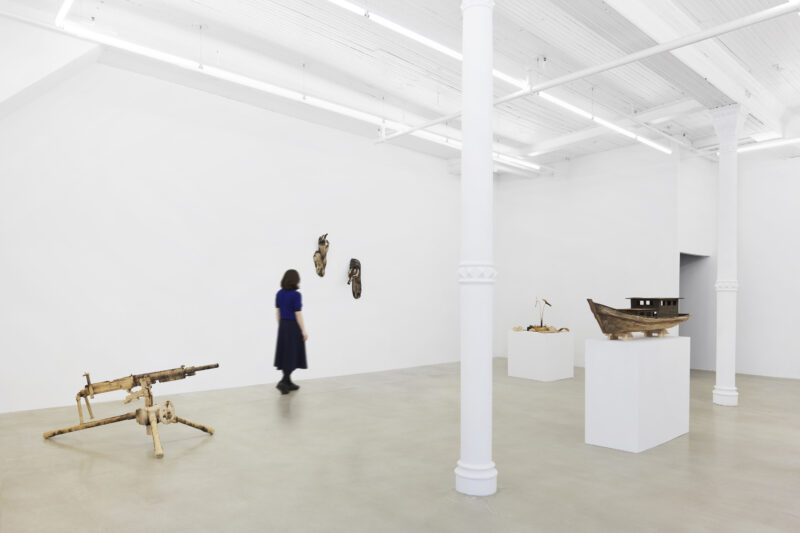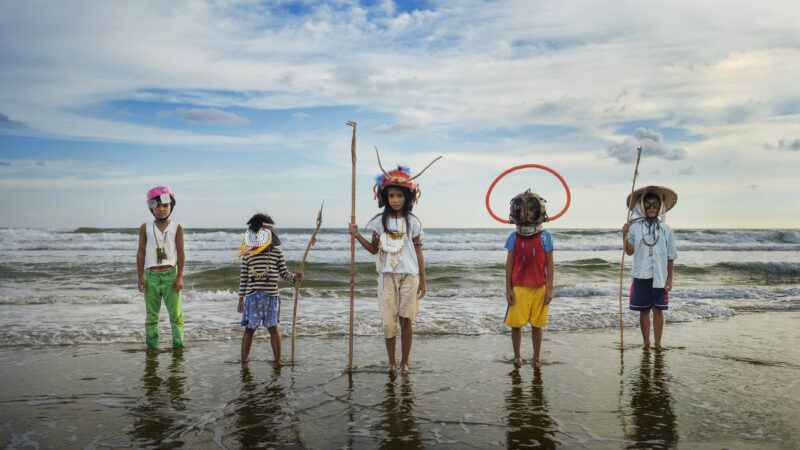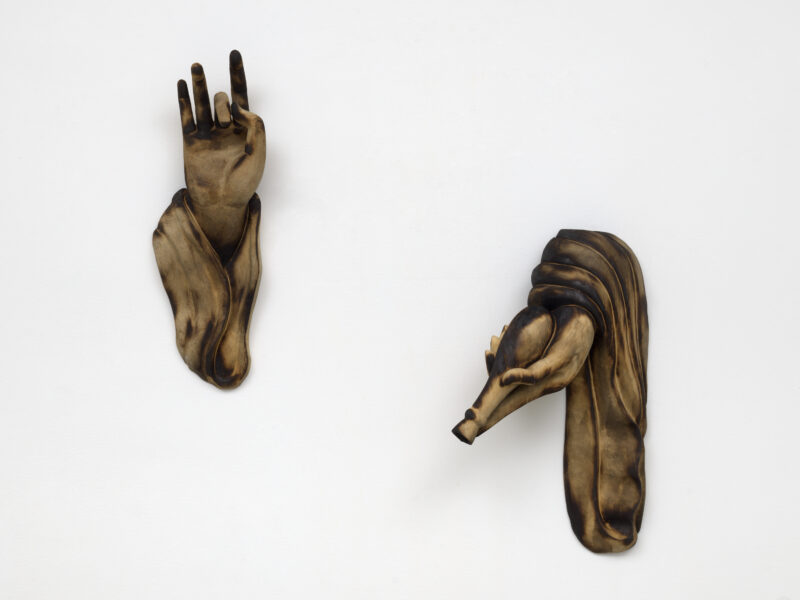
Tuan Andrew Nguyen’s exhibition, “A Lotus in a Sea of Fire,” is a kind of meditation on memory through objects and how we can set them free by fire. At the heart of the show is a video installation, “The Boat People,” a short film narrative centering on a girl who is the “last woman on Earth” and how she’s learned to remember and forget through the objects she finds and creates. The sea of fire is not a means of destruction—the flames serve to free whatever it touches—and it asks us to imagine another world that could be. The exhibition is now showing online at the James Cohan Gallery until May 30th and we were able to speak with Tuan about “The Boat People,” memory as identity, and where home is and will always be.
Often when we talk about inheritance for refugees, there have been a lot of discussion around inheriting trauma which can feel very ephemeral. It’s interesting that your film chose to use objects as sites of inheritance as well, because we often think of material items that are passed on from one generation to the next. How did you choose the objects to tell the story in your film?
Tuan Andrew Nguyen: Objects ground our narratives. There are many objects that are featured in the film. Some objects are replicas of other objects – like the replicas of parts of Angkor built by Cambodian refugees. Other objects are unique and their original versions were handmade, like the refugee boat that landed on the coast of Bataan. I wanted objects that spanned a long period of time – from a sword similar to the one wielded by Lapu Lapu who killed Magellan to a recently erected obelisk that memorializes the Bataan Death March, and many objects in between. In the film, the objects that survived these multiple events are imagined as characters in a larger narrative – the narrative of humanity’s extinction. And they are put in conversation with one another. Each having a different role in the story, each with their own points-of-view – together telling the complex history of Bataan specifically but also the history of humanity in general, which is one of destruction and resilience.

Trailer for “The Boat People”
“The Boat People” has a specific focus on found objects in and around Bataan, Philippines, which was once a refugee processing center. Can you speak on the significance of this location and its connection to the story you told through the film?
I actually think about it the other way around, that the narrative in the film takes its roots from the location. It is sited there, specifically in Bataan. Yes, Bataan was the location of one of the largest refugee processing centers in Southeast Asia after the American war in Vietnam. I have been interested in and researching refugee camps and sites of “landing” for several years now. Thinking about how those specific liminal spaces were spaces to reimagine futurity and also quite interested in the objects that people made within those spaces of liminality. My first project that explores these ideas was a film called “The Island” about Pulau Bidong, one of the larges and longest running refugee camps after the war. But Bataan, like most coastal areas, has been a site of many other “landings” and historical traumas. So the narrative imagines the end of the world and the beginning of a new world, held in the hands of a young girl who we get to know as the last woman on Earth. She lands on the beaches of Bataan and ends up having a conversation with a severed statue head. Through this object as well as the other objects she encounters, she builds her own narrative of the world before her. And we’re left to wonder what is that narrative that she’ll be giving to this new world.
A lot of your work explores the theme of memory and is deeply committed to the act of remembering. What is the impetus for this excavation of memory in your art? Why the rendering of memory and do you have a specific desire for your viewers to experience something specific?
It is memory that builds our understanding of the world, and within that larger understanding, it is memory that helps us construct an identity, to build a sense of self. And depending on how and what memories are handed down, allows us to feel grounded or destabilized, restricted or liberated. There’s a history of erasures caused by colonialism, capitalism, wars, etc. that have left gaping holes where memory and knowledge used to exist. Who remembers for us? Who remembers for those that are forgotten? I believe political resistance is crucial to many communities that have experienced historical trauma and systematic erasures brought by colonialism and other political oppressions. And in those instances, it is the acts of remembering and the creation of memory that become acts of political resistance. I think the power of the moving image (and storytelling) lies in the fact that the viewing experience lends itself to an experience of collective memory.


The element of fire plays an integral part in “The Boat People.” This line in particular really struck me: “Burning brings nowhere to everywhere.” This focus on the element of fire is also an evident juxtaposition to the element of water–which is a visible backdrop in the Bataan setting, of course, but is also a common theme that has appeared across so much Vietnamese diasporic art and writing, often having to do with memory, sorrow, the past, and the dual play of meaning (“water/country”) contained in the Vietnamese word for water. Could you speak about what fire means to you in your work, what it means to aspire to bring “nowhere to everywhere”? And, has the element of fire always called to you (i.e. more than water/nuoc), or did this evolve for you over your journey as an artist?
As a confused kid, growing up in the US and having this burning desire to piece together some rhyme or reason as to why I was where I was, I began going through piles of books about the war in Vietnam and I stumbled upon an image that burned itself into my psyche. It was the image of Thich Quang Duc’s self-immolation that happened in 1963. It’s a famous image that many of us are aware of. I think somehow that image has had a deep and lasting effect on how I think about aesthetics and politics. Since returning to Vietnam I’ve witnessed fire in many forms here – fire breathers performing on the streets for money or during funerals, the burning of votive money (also known as ghost money), and so on and so forth. All these different ways that fire functions here culturally have overlaps with the spiritual and the political in ways that make it a very powerful metaphor.
Where do you consider home now, if any one place over another?
My friend Haruko used to say that “Home is a MOMENT.” I believe that more now than ever. I think returning to Vietnam has allowed me to re-configure my ideas of what home is or what it could be. It’s liberated me from having to site home within any nationalist or geographic context. I’m here! Always!
Tuan Andrew Nguyen’s exhibition is now showing online at the James Cohan Gallery until May 30th.



Contributor Bio
Amy Lam is the Deputy Editor for diaCRITICS.


